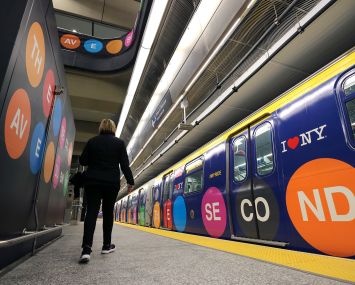ULI Panel: Adaptive Reuse and Density Reform Is Key — But Difficult

A good chunk of urban office stock is obsolete. But can adaptive reuse really be the silver bullet many hope it will be?
That was one big question at the Urban Land Institute’s (ULI) fall meeting at the Los Angeles Convention Center in Downtown L.A. on Wednesday at a general session discussion called “State of Urban Centers: Pandemic, Economy, Opportunity.”.
“It’s no secret cities are going through a challenge,” said Laura Hines-Pierce of Hines. “But we were oversupplied before the pandemic. The shock of the pandemic and the rise of interest rates made it so that oversupply was not allowed to correct naturally. But 10 to 30 percent of the office market is facing true obsolescence.”
The discussion included Clarence Anthony, CEO and executive director of the National League of Cities, and Vincent Reina, a White House adviser on housing and professor at the University of Pennsylvania. Diane Hoskins of Gensler moderated the discussion.
“As you know, the president and White House are very well aware of the housing crisis; we know it contributes to inhibiting economic growth,” said Reina. He proceeded to tick off a long list of initiatives that the Biden administration had proffered to help fix the urban office oversupply and housing undersupply problem, including billions in funding for the Department of Housing and Urban Development and voucher expansion. The administration also last week proposed ways to accelerate conversions of offices into residential and affordable properties.
But, panelists indicated, conversion might not be the cure-all that many hope.
“We’re looking at the low end of the market [to see] if there are conversion opportunities,” said Hines-Pierce. “The truth is, it is hard. There are numbers from Gensler which said that only 11 percent is even in the range of possibility [for conversion] based on floor plates. [These buildings] were built in the 1970s and 1990s, and they have large floor plates which make it challenging.”
Of the properties Hines-Pierce cited in that range, “we looked at 35 or more and underwrote the cost [of conversion]. Of those, only one is moving forward.”
The conversation was not strictly focused on conversions. “Density is one area that a lot of leaders are looking at now that they didn’t in the past,” said Anthony.
Anthony added that “zoning laws and how long it takes” should be reformed. “It shouldn’t take a year or nine months to go through an approval process.”
“The problem is decades in the making,” said Reina. “It’s not going to have one single solution. I think the suite of tools that we brought out on Friday does allow us to achieve affordability and emissions goals… When given the resources we can do that stuff. We can create the context so that can happen.”
Inevitably, this would “push cities in new directions.”
“I think we’re all here because we care about our cities and we’re invested in our cities,” said Hines-Pierce. “It’s the driver of output and GDP; productivity has been declining for the first time since it started being measured in the 1940s; a big driver is cities not [figuring out these questions.]”


